So, you want to start making fashion doll or 1:6 scale figure dioramas. Here’s a short list of Tips & Tricks that I’ve learnt the hard way, back when I started making dioramas. Learn from my mistakes, and benefit from my failures! For why should all of us suffer? Learning should be fun!
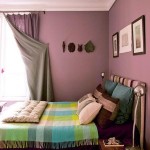


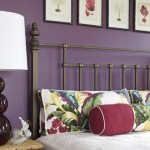
Selection of catalogue images I downloaded, before I started work on my Victoria’s Bedroom diorama.
Google images. Browse catalogues. Those free booklets you can find in the paint section of your local Home Depot are amazing for giving you ideas about colour! Check out your local IKEA for their awesome 1:1 scale dioramas. Build a folder of “inspiration” photos of 1:1 scale images of the sorts of room you want to design.
Pay attention to colour and light.
Think about architectural features you can add, beyond 3 walls and a floor. Think about simple things that don’t require you to have a masters degree in architecture and interior design–like how a bent wall can simulate a skylight, or how a white chipboard gift box can be used as a pillar. How cheap RE shelves from Target can create different levels or steps, ledges or dividing walls.
Contemplate the colour palette of your diorama, from the walls to the furniture and where you can add pops of colour (either in furnishings, miniatures, or even an accent wall in a different colour) to draw the eye. Try and keep decor within the same colour temperature; i.e. cool jewel tones or warm earth tones. Part of what pulls rooms together is colour temp–it’s something people may not be able to name, but their brains recognise when they see something that doesn’t have the same colour temp as the items around it.
Likewise, think in terms of composition the same way you would a photograph or a painting. Having an entire room in white and grey, a single pop of ruby red, or teal will make a statement. So, what statement do you want to make?
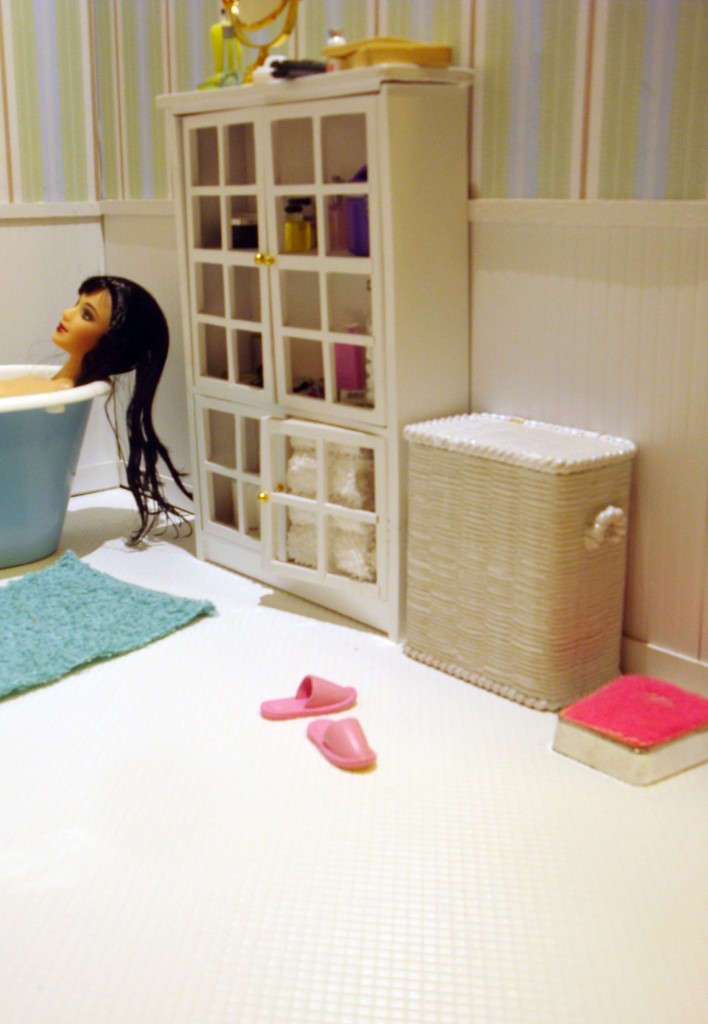
Contact paper is AWESOME for flooring. You can find it online in a variety of patterns and textures. “Butcher’s Block” for example makes for great hardwood floors. Textured vinyl contact paper can work for a 1:6 scale tile floor. And it can also simulate poured resin floors. Check out the selection both online and in your local hardware stores, to see what’s out there. You may not even need to mount it on foamcore or bookbinding board. Sometimes you can just unroll it and weigh the ends down to keep it from bubbling.
If you plan on repainting 1:8 (Playscale) or 1:6 furniture, take a trip to the hardware store for some $3 cans of spray paint that bonds to plastic. Krylon Fusion is often recommended, but the Home Depot brand works just as well, and may have more colour choices. Also, grab the shade you think you want, and one shade lighter and one shade darker, because once you get back to your digs, you may discover that what you’re envisioning may well be too dark or too light depending on the light in the area where you’re constructiing your dio.
When repainting furniture, take it apart first (if you can) and paint the pieces in several very thin layers, allowing each to dry between applications. If you get drips, you can remove the paint while it is still wet with rubbing alcohol, available at any drug store such as CVS, Walgreens, etc. Also, if you’re using vintage pieces where the plasticisers have migrated to the surface, causing ugly yellowing, try either sanding the piece with Brasso on a soft cloth, or a Magic Erasure. Or just give it a light coating of paint the same colour as the plastic.
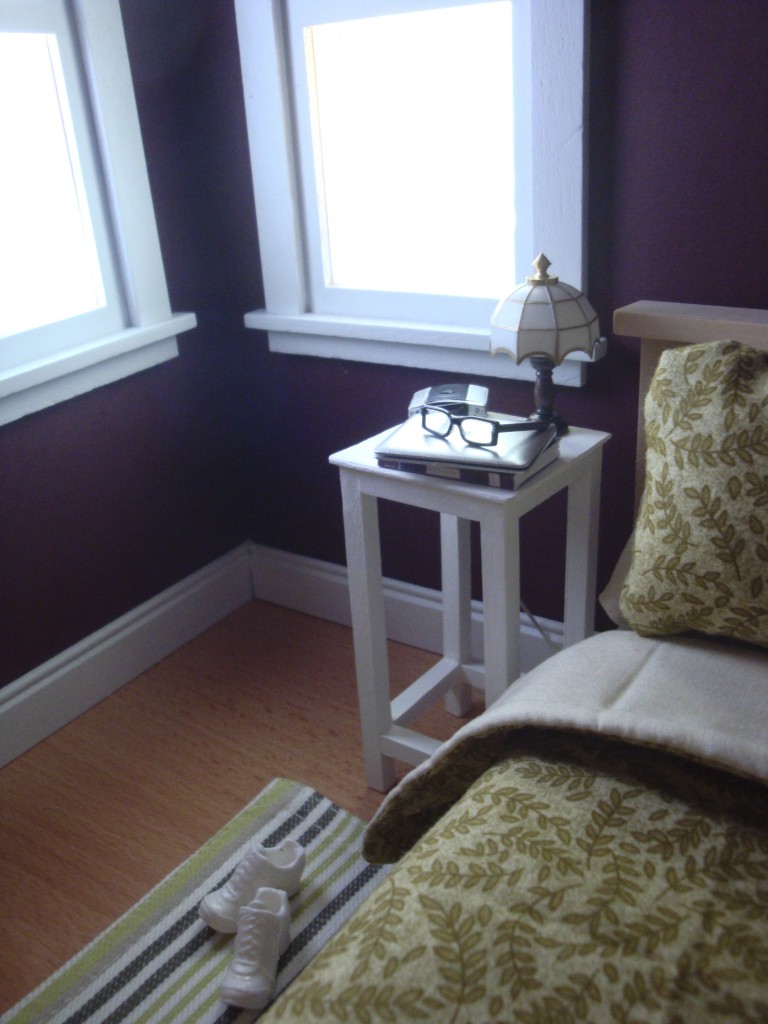
Speaking of lighting, full-spectrum lights are your friend. Especially if you don’t want to spend an hour white balancing your photos to remove the yellow that incandescent bulbs will give you with a digital camera. Also, IKEA sells all kinds of LED lights that put off very little heat and can be used with great effect as ceiling lights.
You have a lot of options for your walls! I personally prefer Crescent brand mat board because it has some texture (which helps when photographing, to reduce shine and glare) and comes in a wide variety of colours. You can find it at Blick, and a 32″ x 40″ sheet can be cut into thirds for an additional $.50 and BINGO, you have your back wall and two side walls. But foamcore is also very popular, and has the added advantage of being easily painted using spray paint. Likewise, for smaller dios, you can get a pack of 4 sheets of 15×20″ bookbinding board for $20 and it can be covered with fabric, scrapbooking paper, or contact paper for walls and floors. All three are relatively easy to cut with a ruler and X-acto knife, to create holes for windows and doors, and you can create hinges using tape.
Green Painter’s Tape is your friend. It’s low tack, can be used to attach posters, mirrors, magnets, or any other wall art you need to your walls, and removes without leaving sticky residue or ripping the surface of mat board, so you can reposition pieces easily, and reuse them. Glue dots are also useful, but make sure you get low-tack ones, and throw the unused dots away after a few months as using old dots to attach trim such as baseboards or door frame trim can rip the surface of your dio walls if you try and reposition/remove them.

A small mitre box is perfect for trimming your wood baseboards, and other basswood pieces, and can be found at most craft stores or online for less than $10. It’s especially useful for cutting trim at a 45° angle for door and window frames, to give your dio a polished, realistic look.
The Structures & Furniture category of Ebay is great for some things, but remember than most Playscale furniture is smaller than you think it is. Sofas are really loveseats. Chairs may need to be raised up with legs made from dowels or blocks. Kitchen counters that are perfect for Blythe or Momoko will hit your Fashion Royalty dolls in the thigh rather than at her waist. Playscale doors from Houseworks will appear too short, next to your Hot Toys Wolverine because playscale doors tend to be 12″ tall rather than 14″ tall.
When looking for furnishings and miniatures, think outside the box. Check out trinket boxes, music boxes, and jewellery boxes for wardrobes, chairs, and more. Pill boxes make great jewellery boxes for your 12″ fashion dolls. Those cool acrylic nesting tables you’ve seen in contemporary/modern dioramas? They’re wholesale jewellery store risers and can be found on the cheap on Evilbay in the Business Industrial categories. Items from the stationary section of your local Target or Marshalls can be used as bookcases, end tables, and more. You can find bamboo silverware holders that can double as 1:6 scale bedframes. Candle holders and napkin rings make great bases for end tables. You can use drawer pulls for towel bars in bathrooms, or even fancy wall sconces. Start training your eye to look at things and see possibilities. Check out the housewares section of your local Target or WorldMarket for napkins and placemats to serve as area rugs, bedding, and more. They’re usually already perfectly scaled for dioramas, and you can really bring a room together with a simple placemat rug that echoes or compliments the colour of the walls or furnishings.
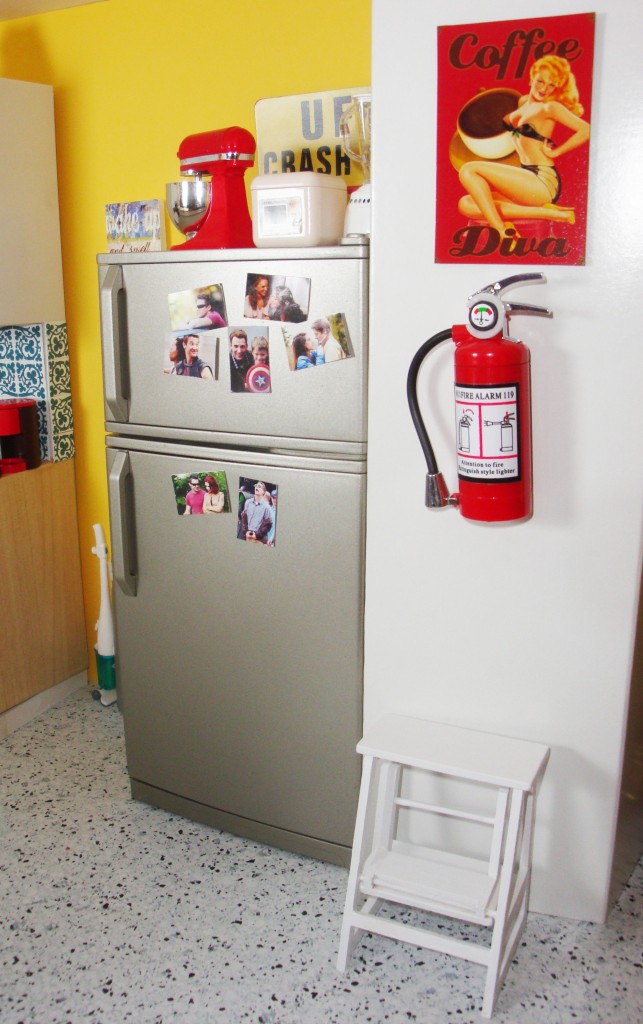
Speaking of fabric that’s scaled for 1:6, Jo-anns sells fat quarters of 100% cotton quilting fabrics for $2 each and they are perfect for when you’re looking for fabric for bedding, throw pillows, wallpaper, and more. Also, they’re arranged by colour, so you can grab different fabrics in the same colour family with ease, for complementary looks instead of covering an entire sofa with the same print. They also often have sales, so never forget to grab the circular when you first enter the store.
Think about what the room says about the characters you plan to put in it. Whether it’s a bedroom, lounge, or a kitchen, think about what story the choice of furnishings and miniatures says about your character. Pull all the minis you have that you associate with the character, but in the end, less is more. Only keep those minis that have something significant to say, and make the room seem lived in. Throw a jacket or a messenger bag over the back of a chair. A pair of shoes peeking out from beneath the bed. A mobile phone resting on a side table. Look around at your own home for ideas. Do you have a framed family photo on top of a bookcase or mantle? Artwork or postcards stuck to the fridge? How does your home reflect you as a person? Think of the same details you can add for your dolls or figures, and choose miniatures that fill in the story for your viewers. From the choice of magazines on the coffee table, to the colour of the kettle on the range, these are the ways you can visually tell your story.

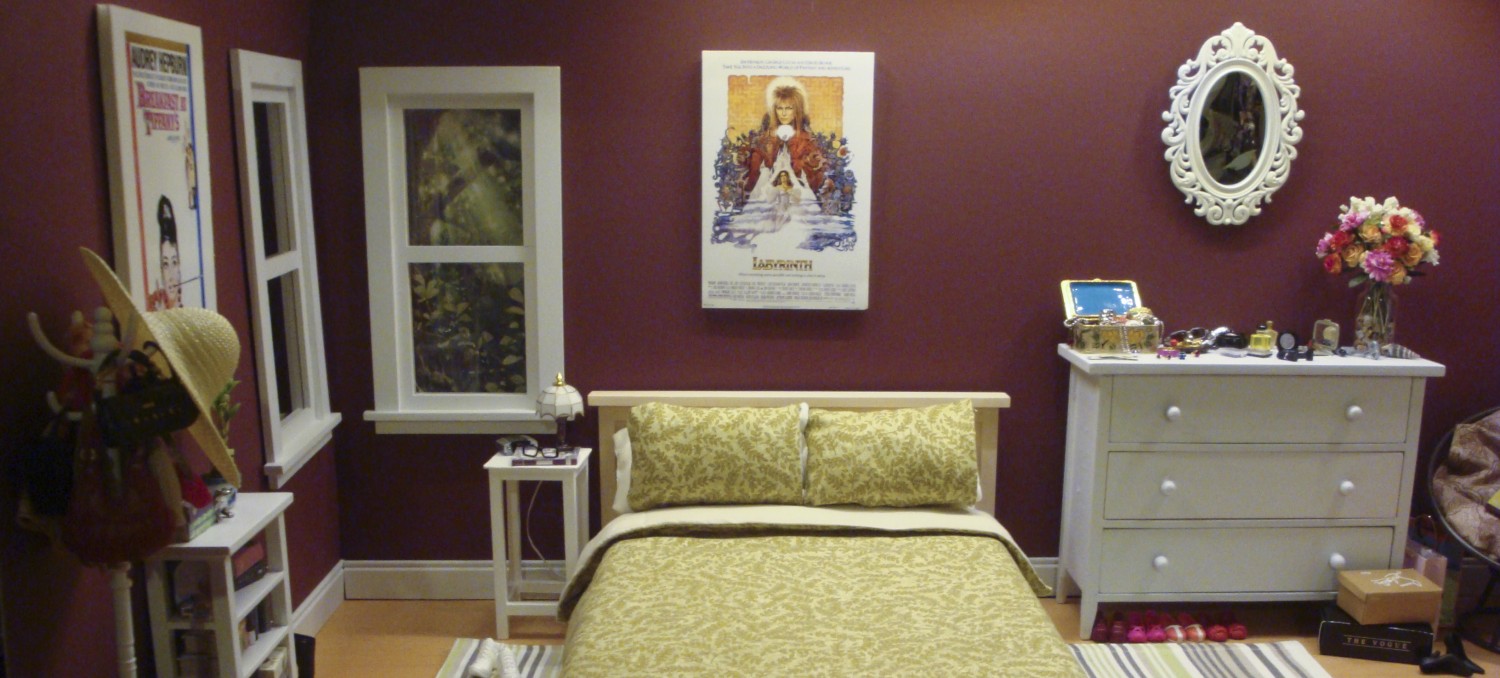
One thought on “Dioramas 101: Thinking Outside The (Room) Box”